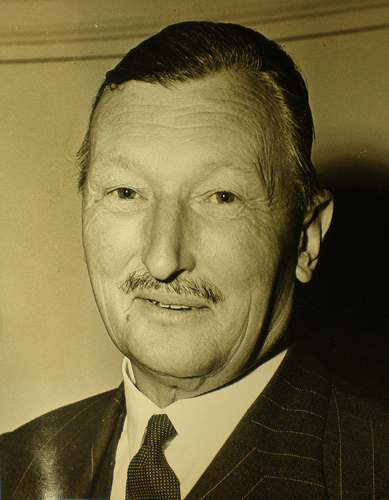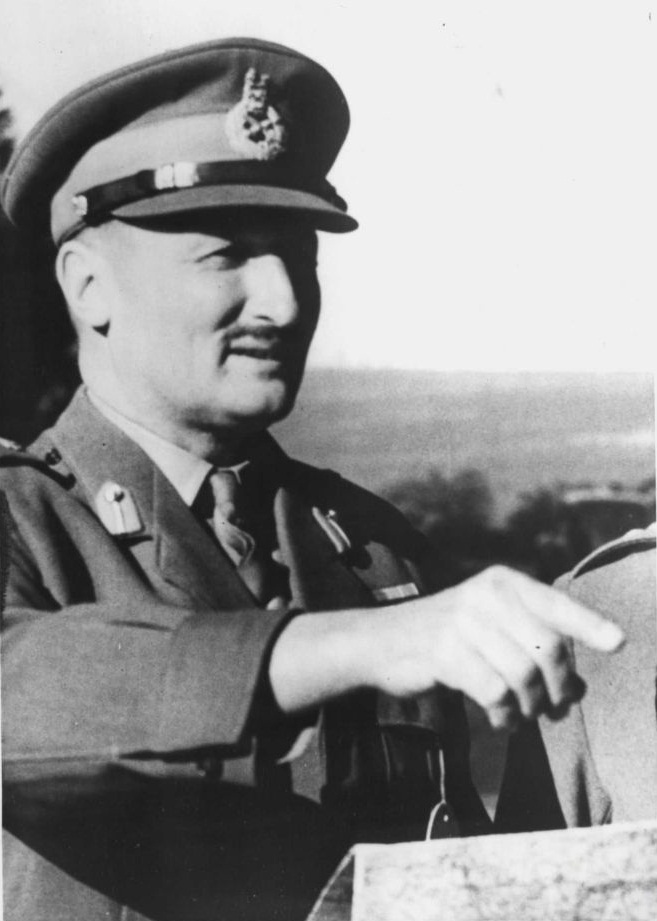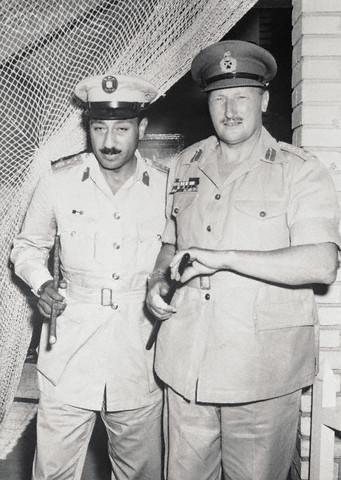<Back to Index>
- General of the British Army Charles Frederic Keightley, 1901
PAGE SPONSOR



General Sir Charles Frederic Keightley, GCB, GBE, DSO (24 June 1901 – 17 June 1974) was a senior officer in the British Army during and following World War II.
He was born in 1901 and was commissioned into the 5th / 6th Dragoons in 1921. In 1938 he was an instructor at the Staff College, Camberley. In 1940, he was appointed as Assistant Adjutant & Quartermaster General of the 1st Armoured Division during that division's deployment to France. On 13 May 1941, he assumed command of the 30th Armoured Brigade on promotion to brigadier. In early 1942, he spent a short time as Commandant of the Royal Armoured Corps Training Establishment. On 21 April 1942, he was promoted major general and assumed command of the 11th Armoured Division, which was then based in the United Kingdom.
On 19 May 1942, he transferred to the command of the 6th Armoured Division, and commanded that division in the Tunisian campaign and afterwards in Italy. He was made Companion of the Order of the Bath (CB) for his services in Tunisia. In December 1943, he swapped commands with Major General Vyvyan Evelegh the General Officer Commanding 78th Infantry Division which was also serving in the Italian campaign and which became his first infantry command. His success as a commander of both armored and infantry divisions led to his promotion in August 1944 to lieutenant general when he was given command of Eighth Army's V Corps in Italy. He commanded this corps during Operation Olive, the offensive on the Gothic Line in the autumn of 1944, and also during the final spring offensive in April 1945, when it took a lead role in forcing the Argenta Gap. The Corps moved into Austria with the surrender of the German Forces and forces that were fighting on the German site.
In East Tyrol and Carinthia, Keightley's army received the surrender of the "Lienz Cossacks" under their leaders Peter Krasnov, Kelech Ghirey and Andrei Shkuro and the XVth SS Cossack Cavalry Corps under Helmuth von Pannwitz . At the Yalta Conference, the British committed themselves to return Soviet citizens to the Soviet Union. After consultation with Harold Macmillan Keightley proceeded to hand over these prisoners and their families regardless of their nationality, including people with French, German, Yugoslav or Nansen passports. The prisoners were delivered by deceit and force to SMERSH at Judenburg; many were executed immediately, the remainder sent to the Gulag.
Keightley left Austria and reverted to the rank of major general in 1946 to become the Director of Military Training at the War Office. In 1948, he became the Military Secretary to the State Secretary of War, returning to the rank of lieutenant general. On 21 September 1949, he assumed command of the British Army of the Rhine in Germany. In August 1951, he became the Commander in Chief, Far East Land Forces in the rank of general. In 1953, he was Commander in Chief Middle East Land Forces, which included the period of the Suez Crisis. Keightley was C - in - C of Operation Musketeer. From 23 November 1947 to 23 November 1957, he was the Colonel of the 5th Royal Inniskilling Dragoon Guards.
He retired from the Army in 1957 and was appointed Governor and Commander in Chief, Gibraltar, a post he held until 1962. He died in 1974.